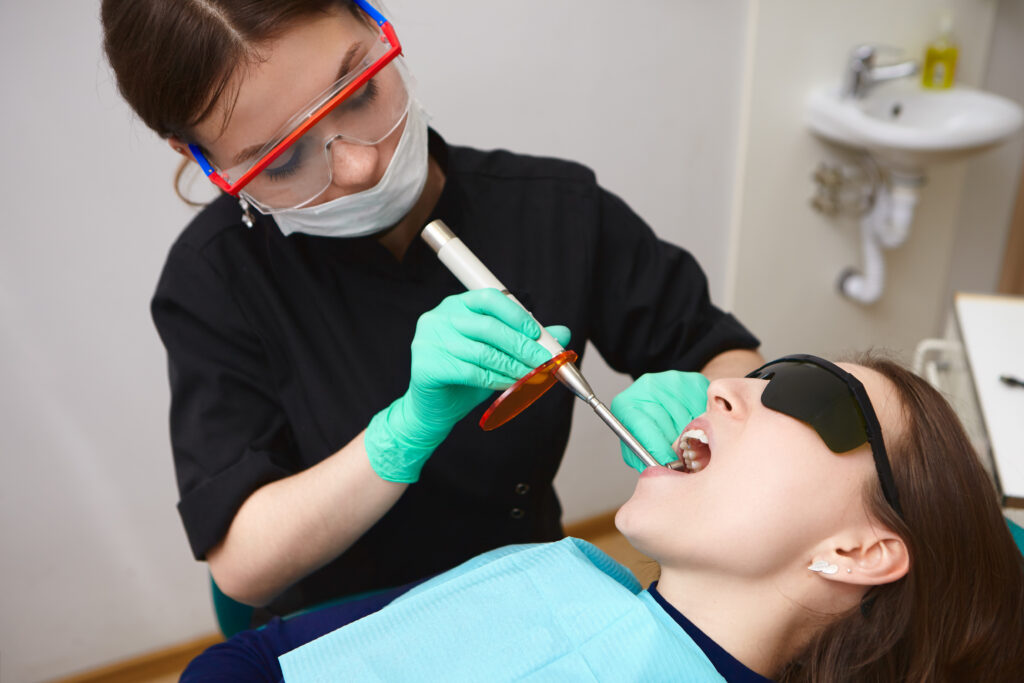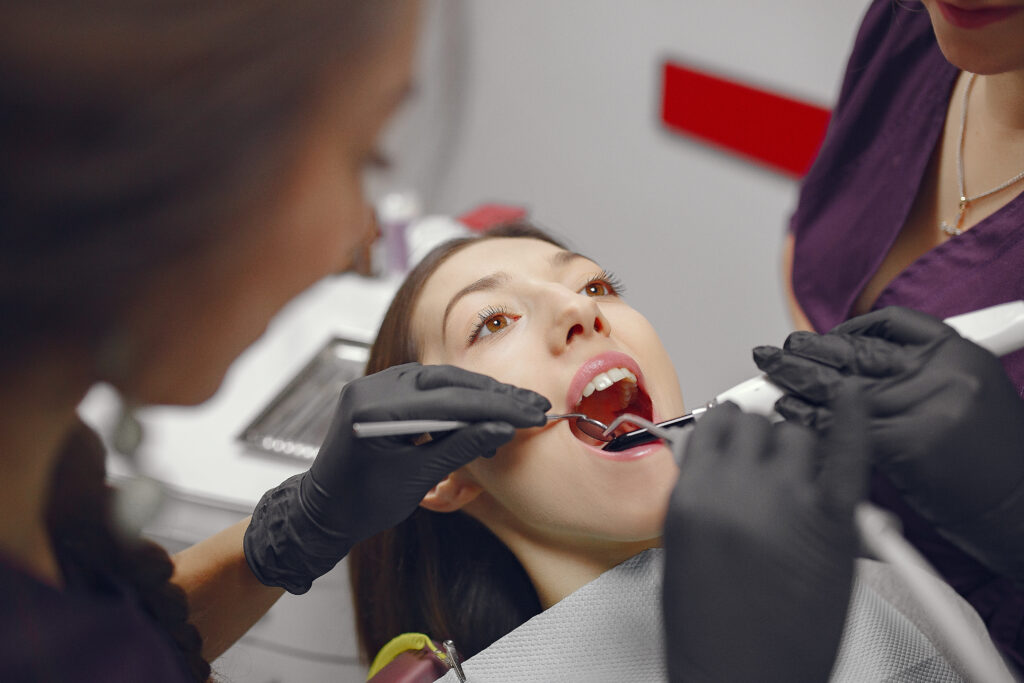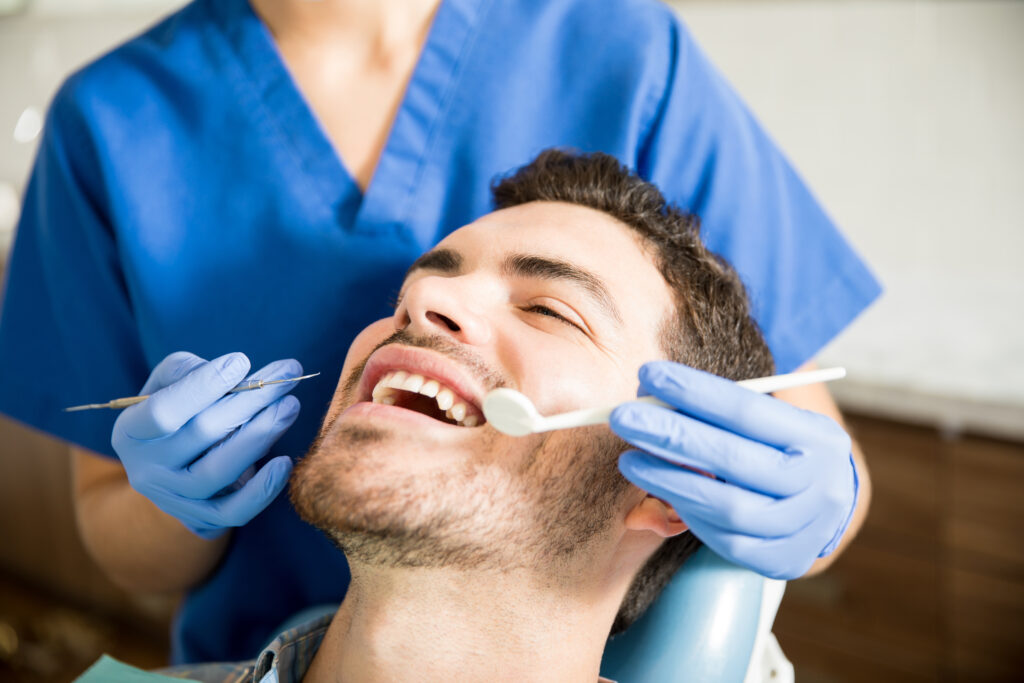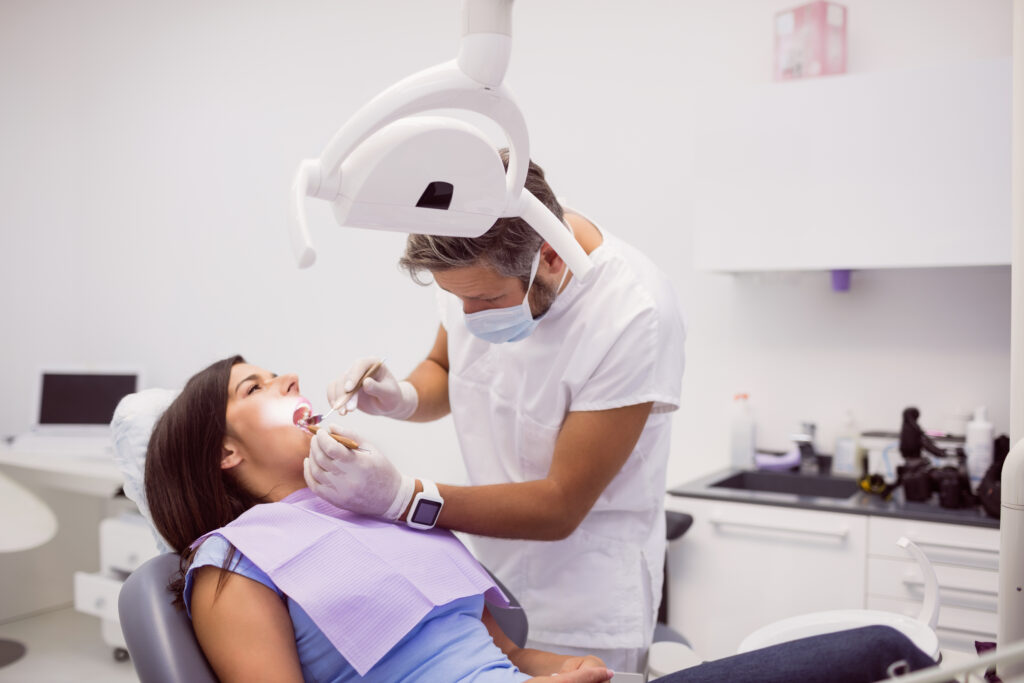Key Takeaways
- Clear aligners in Riverpark are nearly invisible, removable, and comfortable, making them a popular choice for mild to moderate cases.
- Braces help fix crooked teeth and make sure they are in the right spots. They work all the time and don’t depend on how well a person takes care of them.
- Aligners require consistent wear (20–22 hours/day) and careful cleaning, while braces need extra care around wires and brackets.
- Both options generally take 12–24 months and can be similar in cost, depending on treatment complexity.
- Choosing the right method depends on your lifestyle, comfort, and dental needs. Clove Dental in Riverpark helps patients make the decision that fits them best.
If you’re thinking about straightening your teeth, you’ve probably come across two main options: clear aligners and traditional braces. Both can move teeth into the right place, and both can give you a healthier smile, but they’re not the same experience. At Clove Dental Riverpark, we talk with patients every week who are weighing the two. Some want the almost invisible look of aligners. Others want the reliability of braces. The best choice depends on your goals, lifestyle, and comfort.
Here’s a breakdown so you can walk into your decision knowing what really matters.
Why Clear Aligners Are So Popular
Let’s start with what most people ask us about first: clear aligners. These trays are custom-made, snug-fitting, and nearly invisible when you wear them. You swap out the trays every couple of weeks as your teeth shift.
What patients usually love:
- You can remove them to eat, brush, or floss.
- They’re smooth, no wires poking your cheeks.
- Most people won’t even notice you’re wearing them.
But there are trade-offs. Clear aligners require discipline. If you don’t wear them at least 20–22 hours a day, progress slows down.
The Case for Traditional Braces
Braces have been around for decades for a reason: they work. Metal or ceramic brackets are bonded to your teeth and connected with wires. They apply constant, steady pressure.
The biggest strengths of braces:
- They handle complex movements, rotations, and severe crowding.
- You don’t have to remember to put them back in; they’re always working.
- Adjustments are made in-office, so you know treatment is on track.
That said, braces come with some challenges. Cleaning around wires takes more time. Eating sticky or hard foods can be tricky. And of course, they’re visible; there’s no hiding them.
How the Two Compare
If you’re deciding between braces and clear aligners in Riverpark, here are the main points patients at Clove Dental consider:
- Appearance: Aligners are discreet. Braces are visible.
- Comfort: Aligners are smooth; braces can cause some soreness after adjustments.
- Hygiene: Aligners come out for brushing and flossing. Braces need more careful cleaning.
- Discipline: Aligners demand consistency. Braces do the work for you.
- Treatment range: Aligners are best for mild to moderate cases. Braces can handle all cases.
- Checkups: Aligners may need fewer in-office visits. Braces require adjustments every month or so.
No one option is “better” for everyone. It’s about fit.
Cost and Time: What to Expect
People often ask about cost right away. At our practice, clear aligners in Riverpark and braces can be close in price, depending on the length and complexity of treatment. In many cases, aligners are slightly higher, but patients see the convenience and appearance as worth it.
As for time, both options generally take 12–24 months. Simple cases may be shorter, complex ones longer. The real difference is lifestyle, whether you want the freedom of removable trays or don’t mind braces doing their work nonstop.
What We See With Patients in Riverpark
Some patients start with braces and switch to aligners once their teeth are in a better position. Others go straight to clear aligners because their case is simple, and they want the flexibility. At Clove Dental Riverpark, we always do a full exam and listen to what matters most to you, whether that’s speed, comfort, or appearance.
We’ve noticed younger professionals lean toward aligners because of how natural they look in social or work settings. Patients with more complex crowding often get better results with braces. The key is customizing the plan.
Tips If You’re Leaning Toward Aligners
Thinking about clear aligners in Riverpark? Here’s what we usually tell patients:
- Be honest about whether you’ll keep them for most of the day.
- Carry a case so you don’t lose trays at meals.
- Keep them clean, rinse them daily, and brush them lightly.
- Expect some tightness each time you switch trays.
Stick with it, and the results can be just as good as braces for many cases.
Bottom Line
Straightening your teeth is an investment, not just in your smile but in your long-term dental health. Both braces and clear aligners in Riverpark can get you there; the difference comes down to lifestyle and what your teeth actually need.
At Clove Dental in Riverpark, we’ve helped patients with both options, and we’ll walk you through every detail before you decide. Whether you choose the tried-and-true path of braces or the subtle convenience of aligners, the goal is the same: a smile you feel confident about.







